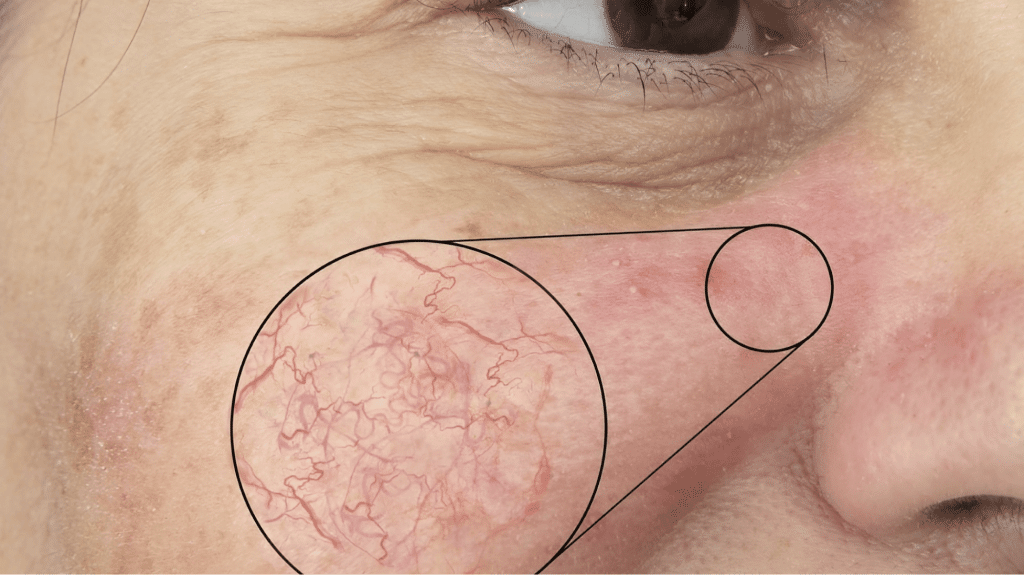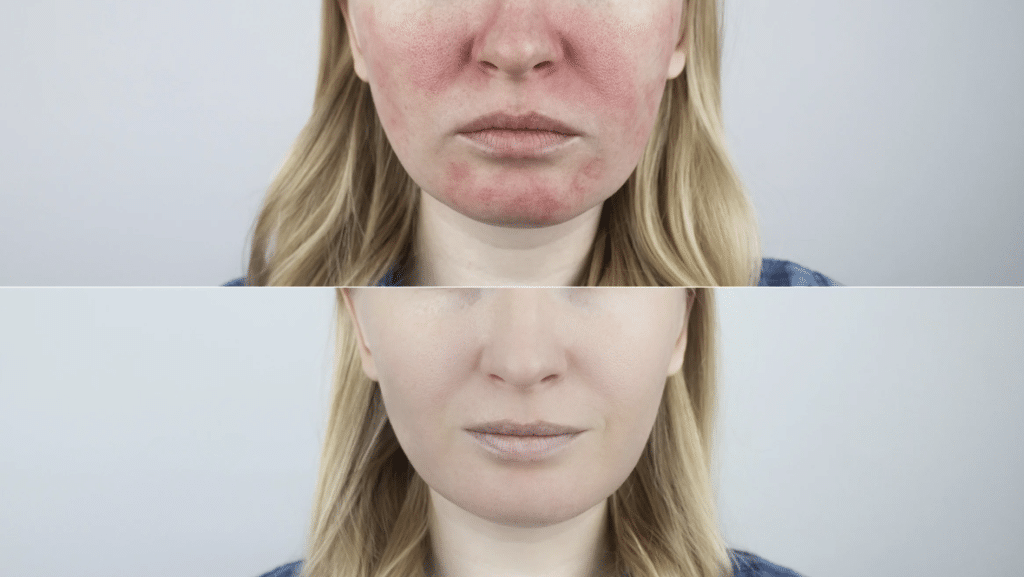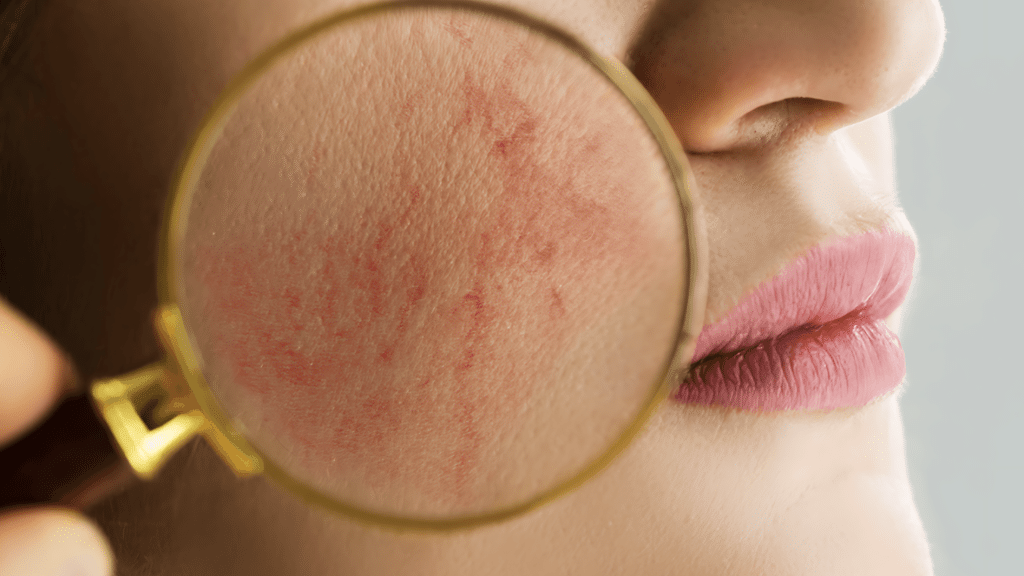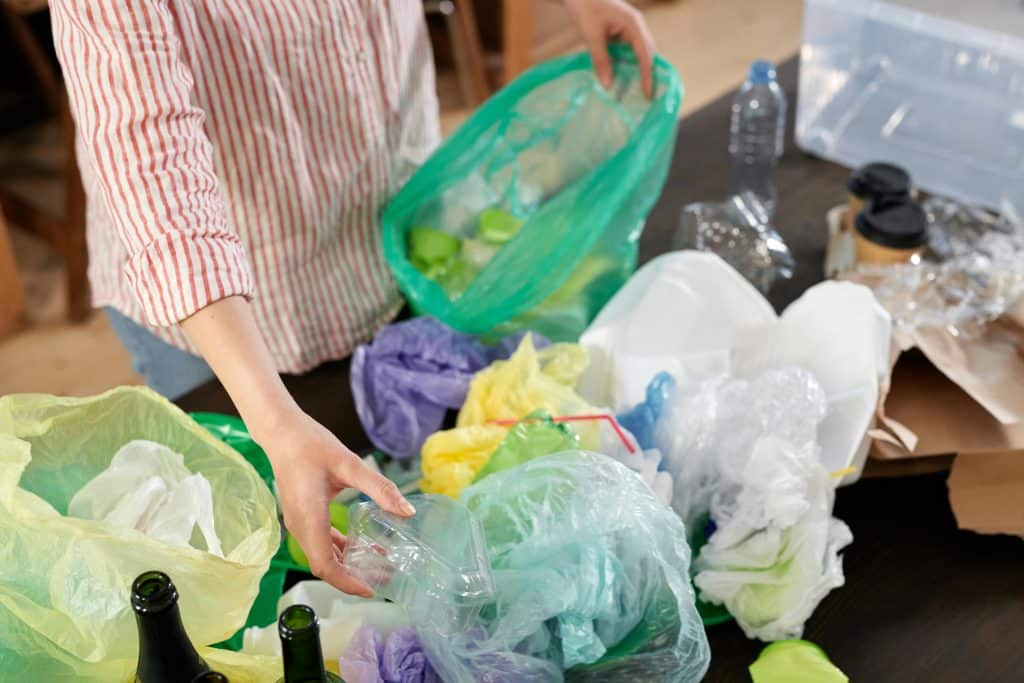Ever noticed those tiny red lines spreading across your cheeks like a roadmap?
You’re not alone. Broken capillaries on the face are super common, yet they can make you feel self-conscious about your skin.
These little burst capillaries might seem puzzling. One day your skin looks clear, and the next you spot these thread-like marks. The good news? You didn’t do anything wrong.
Broken capillaries happen to lots of people. They can pop up from sun exposure, genetics, or even just washing your face too roughly. Some folks get them from rosacea or other skin conditions.
But here’s what matters most: there are real solutions. From gentle home treatments to professional procedures, you have options to tackle those pesky red lines and get your confidence back.
What are Broken Capillaries on the Face?
Broken capillaries are tiny blood vessels that sit just under your skin’s surface. When these small vessels get damaged or stretched, they become visible as thin red, purple, or blue lines on your face.
You’ll typically see them on your nose, cheeks, and chin since these areas get the most sun exposure and temperature changes. Some people also notice them around their eyes or on their forehead, especially if they have fair or sensitive skin.
Broken capillaries aren’t the same as other red skin problems like acne, which causes bumps and swelling. They’re also different from rosacea, which creates widespread flushing and redness across larger areas of your face during flare-ups.
These broken vessels are permanent once they form and won’t fade away naturally over time. The only way to get rid of them is through professional treatments or medical procedures.
What Causes Broken Capillaries on the Face?

Many things can cause those tiny red lines to show up on your skin. Understanding what triggers broken capillaries can help you prevent new ones from forming.
1. Environmental Triggers
Sun damage is one of the biggest reasons people get broken capillaries. UV rays weaken blood vessel walls over time, making them more prone to breaking.
Harsh weather conditions like strong winds and extreme cold put stress on delicate facial capillaries. Heat exposure from saunas or hot showers can cause blood vessels to expand and potentially rupture.
2. Lifestyle Factors
Drinking too much alcohol makes blood vessels swell and can lead to permanent damage. Regular heavy drinking is particularly harmful to facial capillaries.
Smoking reduces oxygen in your blood and weakens vessel walls. Being too rough with your skincare routine can damage delicate capillaries near your skin’s surface.
3. Medical Conditions
Rosacea causes ongoing inflammation that weakens blood vessels in your face. This chronic skin condition often leads to persistent broken capillaries around the nose and cheeks.
Liver problems and hormonal changes during pregnancy can make capillaries more fragile. High blood pressure also puts extra strain on small blood vessels throughout your face.
4. Genetic Predisposition
If your parents had broken capillaries, you’re more likely to develop them too. Fair-skinned people often have more visible broken capillaries because their skin is thinner.
Some people are born with more fragile capillaries that break more easily. Age also plays a role as skin becomes thinner over time.
Who Is Most at Risk?
Some people are more likely to develop broken capillaries than others. Knowing if you’re at higher risk can help you take better care of your skin.
- Light skin tones show broken capillaries more easily
- People with sensitive skin who react strongly to sun and weather
- Those with facial redness or rosacea conditions
- Older adults with thinner skin and weaker blood vessels
- Regular drinkers whose blood vessels expand and contract repeatedly
- Smokers with reduced oxygen flow to skin
- People with family history of broken capillaries
Being at higher risk doesn’t mean you’ll definitely get broken capillaries. Taking good care of your skin and avoiding triggers can help protect your blood vessels.
Treatment Options for Broken Capillaries on the Face

Getting rid of broken capillaries on the face requires professional help in most cases. While these red lines won’t go away on their own, several effective treatments can make them disappear or become much less visible.
Medical Procedures
Professional treatments offer the most effective way to remove broken capillaries completely. These procedures target the damaged blood vessels directly and give long-lasting results.
| TREATMENT | HOW IT WORKS | BEST FOR | RECOVERY TIME |
|---|---|---|---|
| Laser Therapy (Vbeam) | Uses targeted light to heat and destroy broken blood vessels | Small, red capillaries on cheeks and nose | 1-2 weeks of mild redness |
| IPL (Intense Pulsed Light) | Broad-spectrum light targets red and brown spots | Multiple broken capillaries across larger areas | 3-5 days of mild swelling |
| Electrosurgery | Tiny electrical current seals off damaged vessels | Individual capillaries that are hard to reach | 1 week with small scabs |
| Thermocoagulation | Heat energy closes broken blood vessels | Fine capillaries around the nose and eyes | A few days of minor redness |
| Sclerotherapy | Injection closes larger vessels | Bigger broken capillaries (rarely used on the face) | 2-3 weeks with possible bruising |
Most procedures require multiple sessions for best results, but they offer the most permanent solution for broken capillaries.
Dermatologist-Recommended Topicals

While topical treatments can’t remove existing broken capillaries, they help reduce redness and prevent new ones from forming. These are good options for maintenance and mild cases.
- Anti-Redness Serums calm swelling and reduce redness appearance over 4-8 weeks .
- Retinoids strengthen skin and improve overall texture with slow results over 3-6 months
- Use retinoids carefully as they can make redness worse initially, start with a low strength
- Vitamin K creams may help with minor redness and healing in very new capillaries
- Most people need 2-4 laser sessions spaced 4-6 weeks apart for best results
- Topical treatments work better for prevention than for removing existing broken capillaries
Topical treatments require patience and consistent use, but they’re gentler on your skin and help with overall skin health.
Home Remedies and Skincare Tips
While home remedies can’t remove broken capillaries completely, they can help reduce redness and prevent new ones from forming.
| REMEDY | HOW TO USE | BENEFITS |
|---|---|---|
| Cold Compresses | Apply a cold cloth for 10-15 minutes | Shrinks blood vessels, reduces redness |
| Aloe Vera | Apply pure gel to affected areas | Calms irritated skin |
| Chamomile | Use cooled tea bags as compresses | Soothes sensitive skin |
| Green Tea | Apply cooled tea with cotton pads | Strengthens blood vessels |
| Gentle Cleansers | Use fragrance-free, non-harsh products | Prevents further irritation |
| Lukewarm Water | Wash face with tepid water only | Avoids triggering blood vessel expansion |
| Omega-3 Foods | Eat salmon, walnuts, and flax seeds | Reduces body-wide swelling |
| Colorful Produce | Include berries, leafy greens daily | Protects blood vessels |
Remember: home remedies work best for prevention rather than treating existing broken capillaries.
How to Prevent Broken Capillaries from Appearing
Prevention is always better than treatment when it comes to broken capillaries. Simple daily habits can protect your blood vessels and keep your skin looking clear.
- Use SPF Daily: Apply broad-spectrum SPF 30 or higher every morning, even on cloudy days. Don’t forget areas like your nose and around your eyes, where capillaries break most often.
- Avoid Extreme Temperatures and Harsh Treatments: Skip very hot showers and saunas that make blood vessels expand quickly. Say no to rough facials or treatments that scrub your skin hard.
- Manage Your Triggers: Keep track of what makes your face flush and limit these triggers. Drink alcohol in moderation and avoid spicy foods that cause flushing.
- Proper Skincare Layering for Protection: Start with a mild cleanser, apply hydrating serum on damp skin, then moisturizer with ceramides or hyaluronic acid.
Consistency matters more than expensive products. Stick to your routine daily, as prevention takes time but saves you from needing treatments later.
Conclusion
Broken capillaries on the face are more common than you might think. Understanding what causes these tiny red lines is the first step toward managing them effectively.
While home remedies can help reduce redness, professional treatments offer the most reliable results. Laser therapy and IPL procedures can make those stubborn red lines disappear for good.
The key to healthy skin is prevention through daily sun protection and gentle skincare. If your broken capillaries are bothering you, don’t hesitate to consult with a dermatologist.
Ready for clearer skin? Schedule a dermatologist consultation today to discuss your treatment options.
Frequently Asked Questions
Q. Can Broken Capillaries Go Away on Their Own?
No, broken capillaries are permanent once they form. The only way to remove them is through professional treatments like laser therapy or IPL.
Q. Are Burst Capillaries a Sign of Something Serious?
In most cases, they’re just a cosmetic concern. However, the sudden appearance of many new capillaries or pain with redness should be checked by a dermatologist.
Q. Is Laser Treatment Permanent?
Yes, laser treatment permanently removes the treated broken capillaries. However, you can still develop new ones in other areas over time without proper protection.
Q. Can Makeup Cover Broken Capillaries?
Yes, green-tinted primer followed by foundation can hide broken capillaries effectively. Look for full-coverage, long-wearing formulas for top results.






